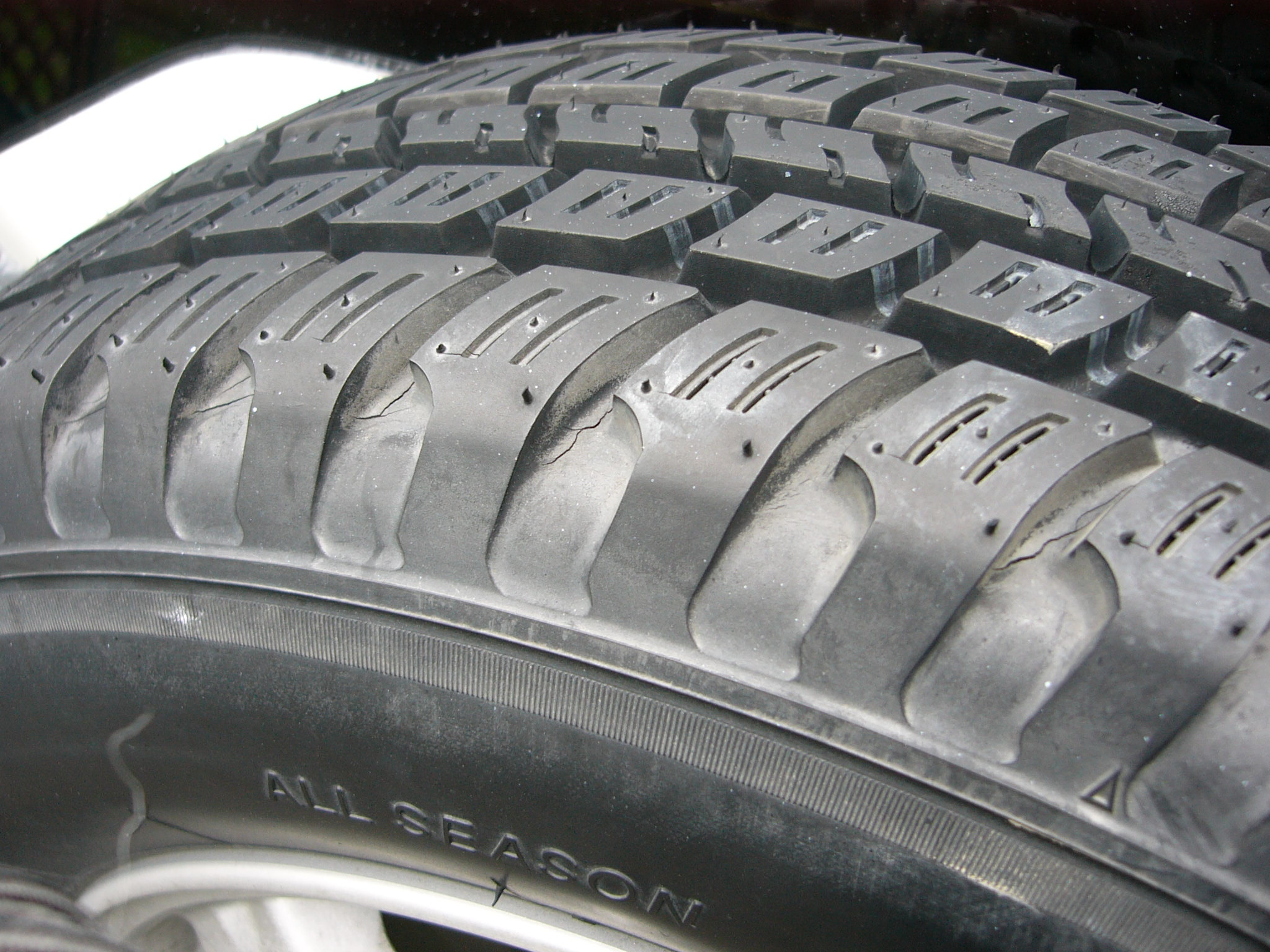You’re all set for winter – or are you?
Last century, drivers kept two sets of tires on hand: snow tires for winter and regular tires for the rest of the year. The reasons were simple: snow tires had extra grooves and traction which proved better at gripping the road and stopping the car in snow and ice. Traction tires (drive tires) improved the overall safety of driving as they provide extra grip. Cars back then did not have all-wheel drive or anything close to what vehicles now offer as standard. Basically, your grandparents just kept the extra set of tires in racks above the ceiling in the garage. Better safe than sorry.
Then came the advent of all-season tires, which did not need to be changed just because the weather turned bad. These new tires were better designed to work well in rough and smooth pavement, so essentially, problem solved. Or is it?
All-season tires are made of a rubber and other materials that do well regardless of the temperature. In theory, there is a give and take in the tire, an expansion and contraction as needed based on the temperature.
The problem is that while this is no big deal in great weather, you may be setting yourself up for an accident in the ice and snow, even if you have four-wheel drive. As great as the rubber is in all-season tires, it is not designed specifically for cold, very cold or extremely cold temperatures. That means that this all-season rubber, like many materials, can stiffen and even freeze. When you are on the road, the last thing you need is a set of frozen tires. The moment you hit the brakes, that could be enough pressure to literally pop open the tires, just like when an icicle hits another object. The end result could be catastrophic, and while your AWD or 4WD will help you steer, it will do you no good if there are no tires to be steered.
Winter tires, by comparison, are made of materials that are designed specifically for freezing and sub-zero temperatures. Much like all that camping gear that stays fluid and mobile even when your bones are freezing, winter tires don’t stiffen, meaning that as you drive along and use your brakes, even when you hit them hard, the tires will literally roll with the punches and stay intact while you – or your AWD or 4WD – steers everyone to safety.
This is important information if you don’t spend your winters in Palm Springs or Fort Lauderdale, and even more important if you enjoy extreme outdoor sports during the winter. Yeah, it’s a pain to keep two sets of tires when you may never need them, but as my father (a very wise man who died of complications due to Parkinson’s Disease a few years back) used to say, better to over-pack for your winter journey than to spin out of control and survive, only to freeze to death because you didn’t prepare.
Seriously, I wouldn’t be writing about this if I did not feel it is important. Earlier this autumn, I got to meet some really nice people from Bridgestone, and, yes, they are in the business of selling tires. Their seminar that I attended in South Bend, Indiana, really opened my eyes to how having winter tires can make braking swiftly and safely as easy as singing along with Destiny’s Child, while not having winter tires on ice (we drove on a Notre Dame hockey rink) can make you skid just a few extra feet, enough to literally send you over the edge. (I’m a Survivor, I’m not gonna give up … )
Believe it or not, you can buy tires online. One of my hosts was The Tire Rack, an Amazon.com of sorts for tires, and they can help you pick tires that will work for you – and even ship them to the garage of your choice or one in your neighborhood. Click here to see how much winter tires will cost you, or visit a local tire store (but make sure it’s reputable and not one that will try to sell you old tires, which, believe it or not, do not last forever in the warehouse).
Admittedly, this article sounds like one big promotional effort, and I too hate that. But honestly, this is important. My friend Kurt Spitzner at Bridgestone spent time with me, showing me how to drive properly on ice and how to use everything on the car – including the tires – to correct a situation gone awry. (BTW, he also operates a winter driving school in Steamboat Springs, Colorado. Click here to check it out.) It was eye-opening, to be sure, and worthwhile.
Don’t have a garage to store your spare tires? Tire Rack can help you find a way to store and keep current on your tires. Yes, Virginia, there is a Santa Claus and this is indeed what the internet is all about.
Just because all your friends are going off a cliff doesn’t mean you have to join them…especially when no matter how you slice it, it’s always messy.
Baby, it’s gonna be cold outside soon. Stay safe and stay gay.

I have never heard of a tire failing from the cold and I drove trucks in Alaska better to tell your readers that deep aggressive tread is the way to go in snow and the only thing that works on ice are carbon steel studs that will cost you extra to be put in the tires or snow chains that can be had in the old fashion chain link style or the European style made from aircraft cable that can be run at higher speeds and are quieter lighter and a hell of a lot easier to put on so you girls do not break a nail !!